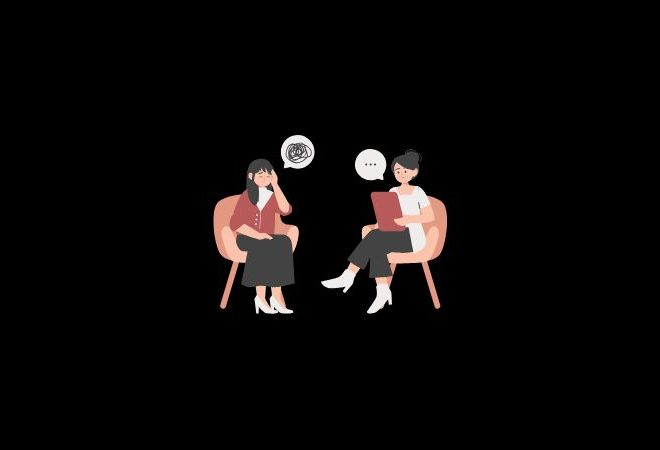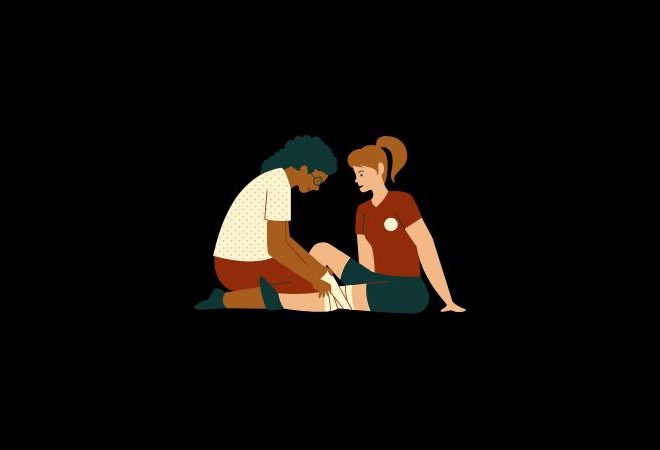
What Are Therapeutic Play Teams—and Do They Work?
Affiliate hyperlink discover: As an affiliate of BetterHelp and different third-party distributors, We are going to obtain compensation for those who make a purchase order utilizing the hyperlinks supplied on this web page. For extra info, go to our disclosure web page.
Final Up to date on Might 30, 2025 by Randy Withers
Most of us consider playgrounds as locations for laughter, tag, and swinging towards the clouds. However what if these areas might do extra? What in the event that they had been quietly serving to youngsters with critical psychological well being challenges—like social nervousness—study to attach, communicate up, and really feel courageous once more?
This text explores how therapeutic play teams—clinically knowledgeable, developmentally acceptable interventions—will be held in playground settings to assist youngsters battling nervousness, emotional regulation, and peer avoidance. We’ll discover how structured actions on the playground can assist youngsters identified with the commonest sort of hysteria dysfunction, why cooperative play is a key developmental ingredient, and the way interventions grounded in each psychological principle and play science might help youngsters develop emotional resilience in an setting that feels pure—not medical.
We’ll additionally discover how therapists and facilitators apply instruments like CBT, and construction play in methods which can be intentional, supportive, and deeply therapeutic for socially anxious youngsters.

What Is Social Anxiousness in Childhood?
Social nervousness dysfunction in youngsters goes past shyness. It could possibly present up as:
- Concern of talking or being watched by others
- Avoiding group actions or faculty altogether
- Clinging to folks or refusing to make eye contact
- Complaints of stomachaches or complications in social settings
- Meltdowns throughout transitions or peer interplay
Left untreated, social nervousness can intervene with studying, friendships, and long-term improvement. It’s thought-about the commonest sort of hysteria dysfunction, but usually goes unrecognized—particularly in youngsters who seem quiet, compliant, or “well-behaved.”
Examples of social nervousness dysfunction in youngsters embody refusing to take part in group studying, turning into mute in school regardless of talking at residence, or fleeing birthday events and playdates with out rationalization.
That’s the place therapeutic play teams could make a distinction.
What Are Therapeutic Play Teams?
Therapeutic play teams are small, clinician-facilitated gatherings of youngsters designed to assist emotional progress, social abilities, and confidence by way of guided play. They’re particularly efficient for kids with social nervousness as a result of they meet youngsters the place they’re—utilizing developmentally acceptable instruments like video games, storytelling, and motion quite than formal speak remedy.
These teams are sometimes led by licensed psychological well being professionals or educated specialists in youngster improvement. Periods concentrate on:
- Constructing belief in a gaggle setting
- Practising age-appropriate assertiveness
- Figuring out and expressing emotions
- Studying learn how to preserve a optimistic angle by way of setbacks
- Gradual publicity to feared social conditions
When these teams meet on playgrounds, one thing magical occurs: remedy turns into play, and play turns into a therapeutic instrument used to calm social nervousness.
Why Playgrounds?
Playgrounds provide what remedy workplaces usually can’t:
- Open-ended alternative for exploration
- Motion-based emotional regulation
- Unscripted, peer-based social interplay
For youths with social nervousness, playgrounds present a versatile enviornment for publicity to widespread triggers (e.g., asking to affix a recreation, coping with frustration, dealing with embarrassment) in a setting that feels acquainted—not intimidating.
Analysis exhibits that cooperative play—when youngsters work collectively towards a shared purpose—is linked to larger empathy, communication, and self-confidence. This idea, pioneered by sociologist Mildred Parten, is usually used to construction group interventions in playground settings. Somewhat than simply “letting youngsters play,” expert facilitators create scaffolded alternatives for kids to follow social risk-taking in small, manageable doses.
How Therapeutic Play Teams Work on Playgrounds
A well-structured therapeutic play group on a playground may embody:
1. Opening Circle (5–10 minutes)
- Kids test in utilizing emotions playing cards or motion cues
- Group norms are reviewed: respect, kindness, no strain
- Facilitator previews the theme of the day (e.g., teamwork, bravery, utilizing phrases)
2. Guided Playground Exercise (30–40 minutes)
Examples:
- Impediment course requiring pair collaboration
- “Emotions Freeze Tag” the place youngsters identify feelings when tagged
- Workforce scavenger hunt encouraging verbal coordination
- Function-play stations (e.g., “being not noted,” “asking to play”) with prompts
Throughout this section, the facilitator tracks physique language, encourages small acts of assertiveness, and gently redirects avoidant or aggressive behaviors.
3. Closing Circle (10 minutes)
- Reflection: What felt enjoyable? What felt scary? What did you strive that was new?
- Use of social tales or emotions thermometers to course of challenges
- Preview of subsequent week’s exercise
All of this occurs below the guise of makes use of playground actions—however make no mistake, it’s medical work in movement.

Advantages of Therapeutic Play Teams on Playgrounds
When structured deliberately and led by educated facilitators, therapeutic play teams on playgrounds provide extra than simply recent air and enjoyable. They supply focused alternatives for kids to construct social abilities, course of tough feelings, and follow new behaviors in a dynamic, real-world setting. These advantages span throughout emotional, social, and cognitive domains—and so they usually unfold in refined however highly effective methods.
Social Advantages
- Follow making and sustaining friendships
- Improved turn-taking, perspective-taking, and cooperation
- Publicity to optimistic peer fashions
Emotional Advantages
- Decreased avoidance behaviors
- Higher self-expression and emotional vocabulary
- Elevated misery tolerance
Cognitive Advantages
- Extra versatile pondering in social problem-solving
- Enhanced capacity to learn non-verbal cues
- Lowered internalized self-criticism
In brief, therapeutic play teams assist youngsters develop emotional resilience in actual time. And the playground makes it doable in a approach no classroom or remedy workplace ever might.
Essential Limitations and Issues
Whereas therapeutic play teams will be highly effective, they don’t seem to be a one-size-fits-all resolution. It’s important to know their limitations and the situations below which they work finest.
Not Each Youngster Is Prepared for Group Work
Some youngsters with extreme social nervousness, selective mutism, trauma histories, or co-occurring situations (like autism or ADHD) could initially battle in group codecs. These youngsters could profit from particular person remedy, guardian teaching, or different interventions earlier than getting into a play-based group.
Facilitator {Qualifications} Matter
The success of those teams relies upon closely on who’s main them. An informal playground group led by a volunteer or paraprofessional gained’t ship the identical therapeutic outcomes as one guided by a educated youngster therapist, occupational therapist, or licensed counselor acquainted with youngster improvement and publicity work.
Playgrounds Alone Aren’t Sufficient
The situation helps the work—but it surely doesn’t exchange it. A therapeutic play group should nonetheless comply with a structured, goal-directed mannequin with built-in reflection, suggestions, and skill-building. Simply being outdoors or utilizing playground actions isn’t inherently therapeutic.
Group Composition Is Key
Placing socially anxious youngsters collectively with out considerate group matching (when it comes to age, developmental degree, or emotional readiness) can typically reinforce nervousness or lead to group shutdowns. Expert facilitation is crucial to softly draw every youngster into the expertise.

How Mother and father and Colleges Can Assist the Course of
Should you’re a guardian or educator enthusiastic about bringing therapeutic play teams to your faculty or follow, think about the next:
- Discover a educated clinician in youngster remedy, play remedy, or leisure remedy
- Begin small—4 to six youngsters is right for security and group cohesion
- Use intentional construction—video games ought to match therapeutic objectives
- Debrief after play to assist youngsters combine emotional classes
- Be affected person—some youngsters will watch earlier than they be a part of. That’s OK.
Colleges, particularly, are a perfect setting for these applications. With entry to each area and peer teams, they will provide low-cost, high-reward interventions that ease nervousness, construct connection, and preserve a optimistic angle towards studying and peer engagement.
Closing Ideas
Therapeutic play teams aren’t about fixing youngsters. They’re about creating the correct situations for teenagers to repair their very own tales—to see themselves as succesful, likable, and courageous.
When these teams happen on a playground, one thing necessary occurs: youngsters get to follow actual abilities in actual settings with actual friends. They transfer their our bodies. They face fears. They threat being seen.
And in that area between concern and freedom—supported by expert facilitators and anchored in psychological knowledge—they develop.
So let’s reimagine the playground. Not simply as recess, however as remedy. Not simply as enjoyable, however as freedom. Not simply as motion, however as therapeutic in movement.
And whereas these teams will be transformative, they’re not a silver bullet. Therapeutic play teams have to be thoughtfully designed, expertly facilitated, and individualized to the wants of every youngster. With the correct construction and assist, they are often one of the accessible and joyful methods to assist youngsters overcome concern—and rediscover connection.
FAQ: Therapeutic Play Teams and Social Anxiousness
1. What age group are therapeutic play teams finest for?
Most therapeutic play teams are designed for kids ages 4 to 12, although teams will be tailored for preschoolers or early adolescents. The bottom line is matching developmental readiness, not simply chronological age. Kids ought to be capable to comply with easy instructions and tolerate transient group interactions—even when they’re initially hesitant.
2. Can mother and father observe or take part in these teams?
Most often, mother and father don’t take part within the group itself, however some applications provide remark alternatives or structured guardian debriefs. This helps reinforce therapeutic beneficial properties at residence. Father or mother involvement outdoors the session—by way of teaching or follow-up follow—is usually important for lasting progress.
3. How lengthy do therapeutic play teams usually run?
Teams could also be supplied in cycles of 6 to 12 weeks, with weekly periods lasting 45 to 60 minutes. Some are open-ended, whereas others comply with a structured curriculum. Progress is often assessed over time, and group continuity helps youngsters construct belief and momentum.
4. Are therapeutic play teams coated by insurance coverage?
If the group is led by a licensed psychological well being supplier and coded appropriately, it could be eligible for reimbursement below group remedy advantages. Nonetheless, this varies by plan, prognosis, and placement. Some faculties and clinics provide low-cost or grant-funded variations as effectively.
5. How do I do know if my youngster is an effective match for a therapeutic play group?
A quick screening or session with a therapist is usually really helpful. A toddler who’s withdrawn, overly shy, anxious in peer settings, or struggling to make pals could profit—particularly in the event that they’re receptive to playful, nonverbal approaches. Kids with important behavioral challenges might have particular person work first earlier than becoming a member of a gaggle.
Let me know for those who preferred this submit. Your suggestions is necessary!


